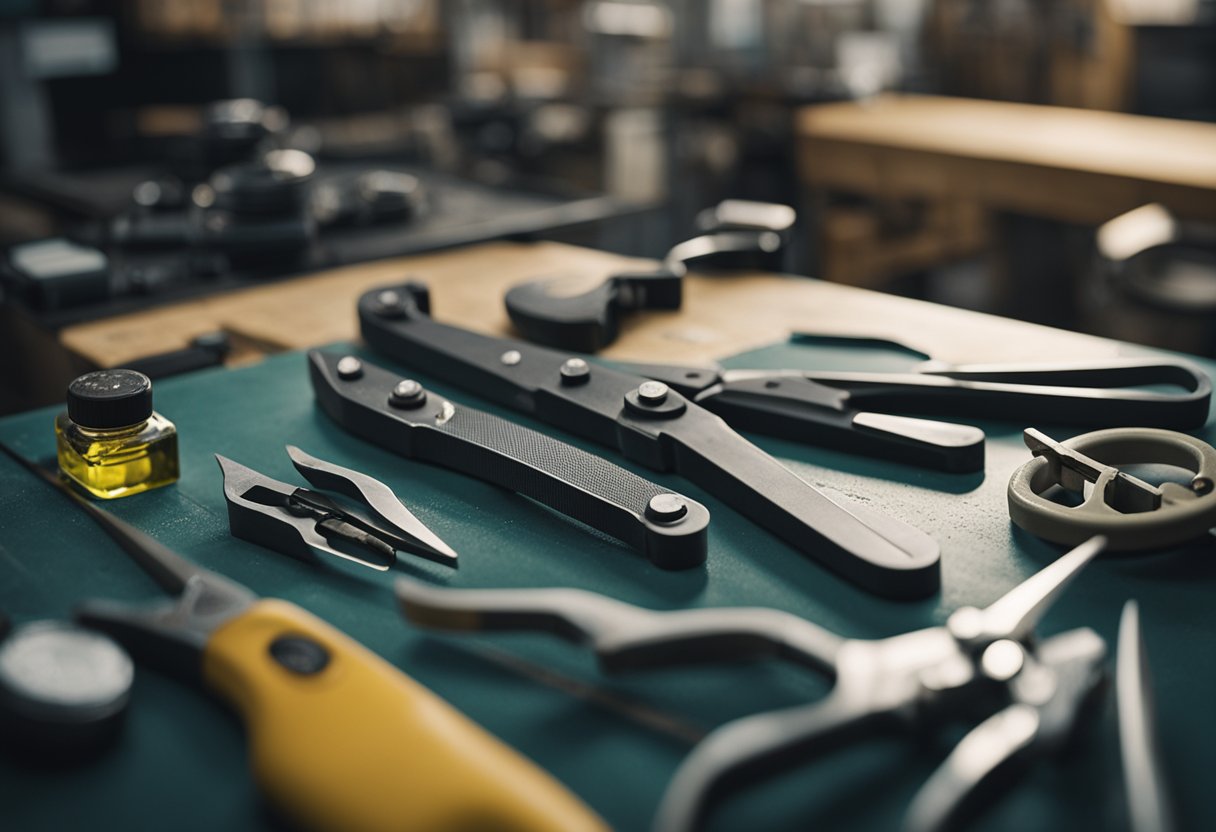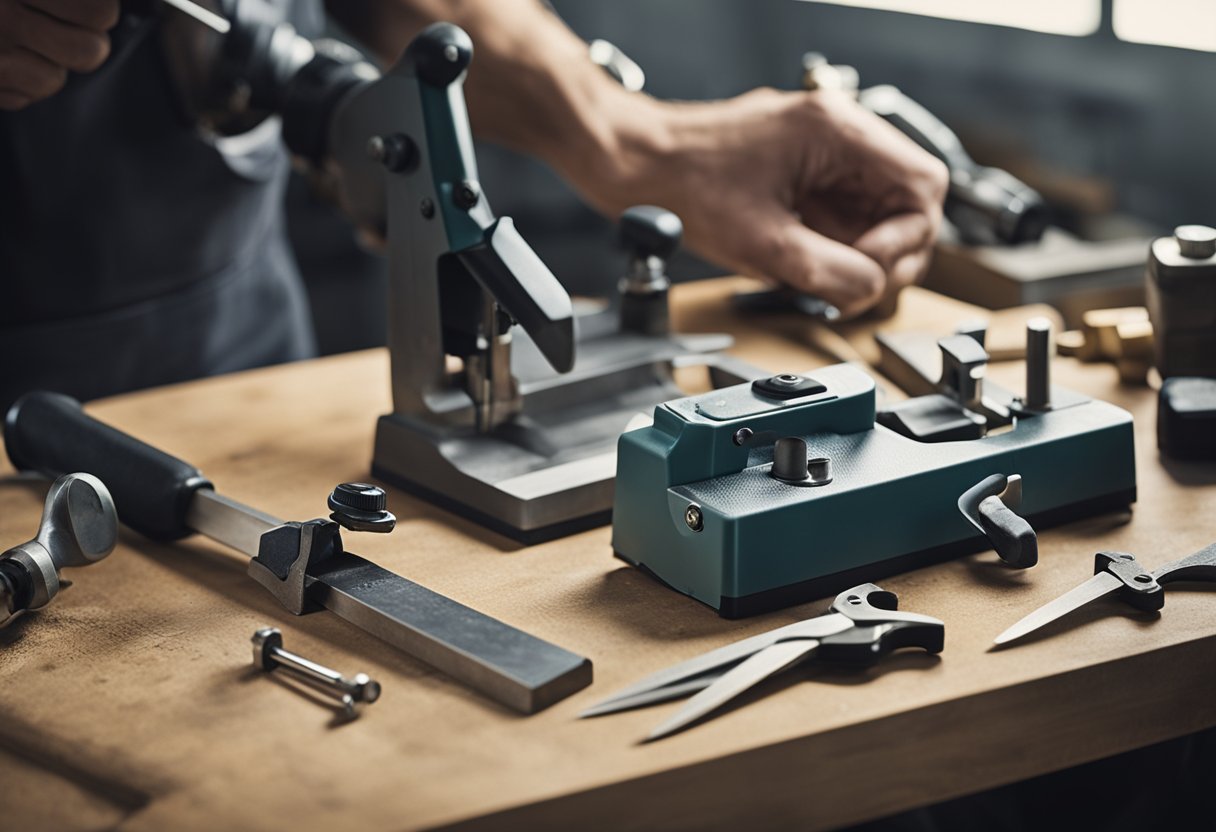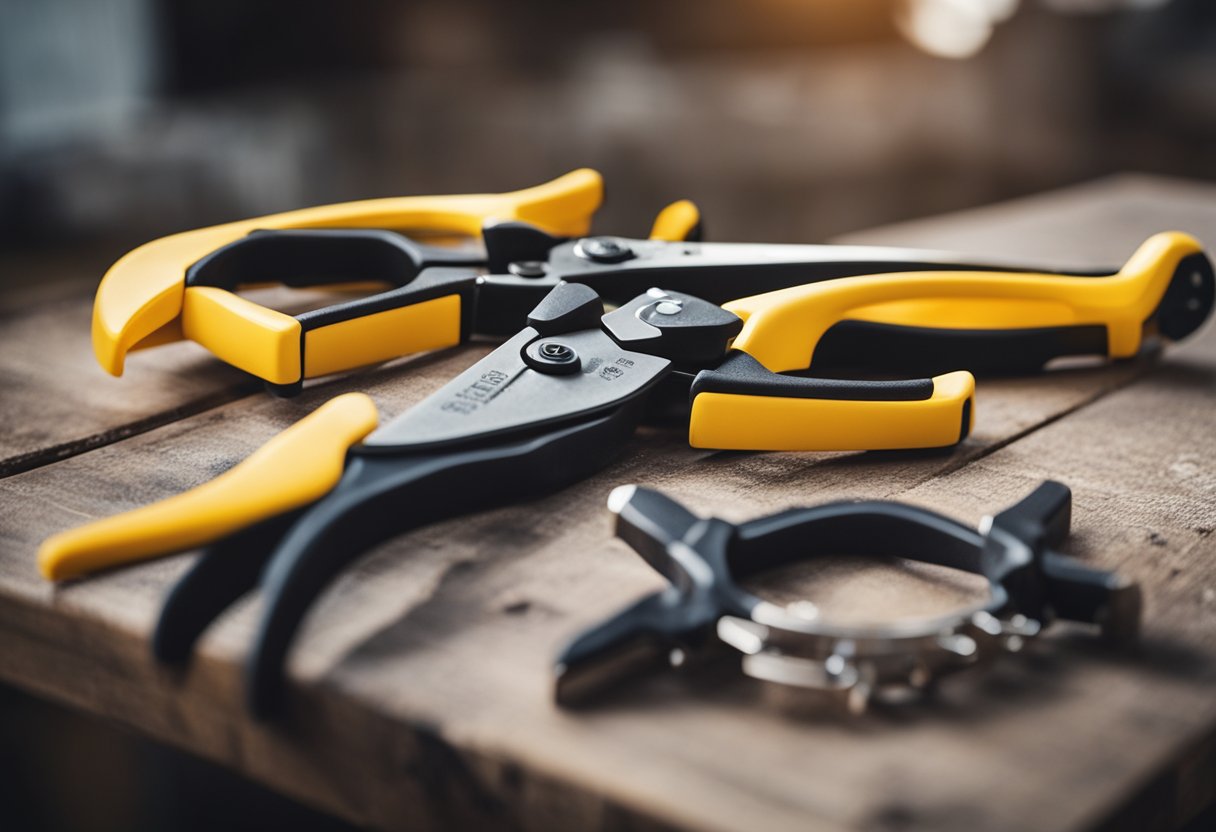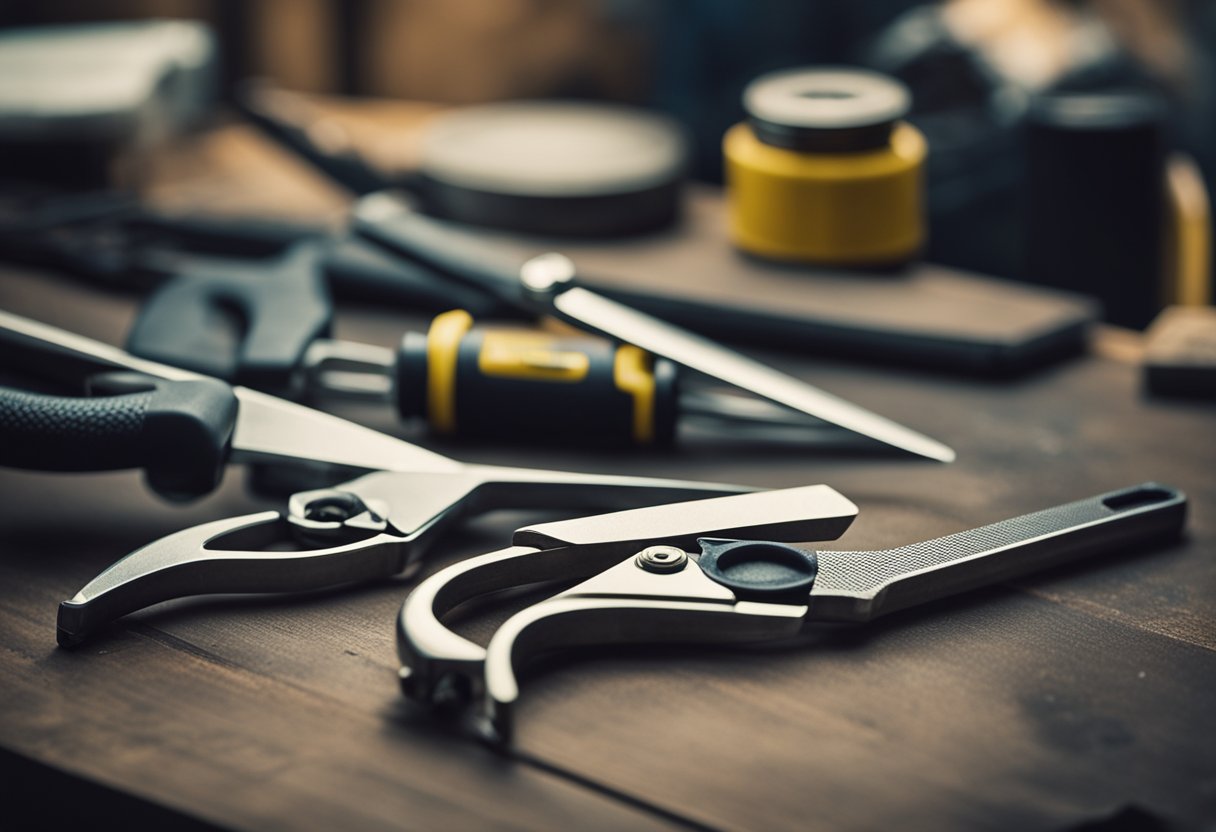As a DIY enthusiast or a professional electrician, you know how important it is to have sharp wire cutters. Dull wire cutters can damage the wire or make the job harder than it needs to be. Sharpening your wire cutters can save you time, money, and frustration. In this article, I will guide you through the process of sharpening your wire cutters so that they can perform like new again.
Wire cutters come in various shapes and sizes, but the basic principle behind sharpening them is the same. Before you start sharpening, it’s essential to understand the anatomy of the wire cutters. Wire cutters have two blades that come together to cut the wire. The blades have a beveled edge that can become dull over time. Sharpening wire cutters involves removing the dull edge and creating a new sharp edge.
Now that we know the basics let’s get started on sharpening those wire cutters. But before we dive into the sharpening process, let’s talk about the preparation and safety precautions you should take.
Understanding Wire Cutters
https://www.youtube.com/watch?v=oBBJGAprynQ&embed=true
As the name suggests, wire cutters are tools designed to cut wires of different gauges. They are also known as cutting pliers or diagonal cutters. Wire cutters feature two sharp blades that come together to provide a clean and precise cut. They are available in various types, such as end-cutters and long-nose pliers with cutting edges.
Wire cutters are an essential tool for anyone who works with wires, whether it’s for electrical work or DIY projects. They are designed to cut through soft and hard wires with ease, making them a versatile tool to have in your toolbox.
When selecting wire cutters, it’s important to consider the gauge of the wire you will be cutting. Different types of wire cutters are designed for different gauges of wire. For example, end-cutters are ideal for cutting through thicker wires, while long-nose pliers with cutting edges are better suited for cutting through thinner wires.
It’s also important to choose wire cutters that are comfortable to use. Look for wire cutters with ergonomic handles that provide a comfortable grip and reduce hand fatigue. This is especially important if you will be using the wire cutters for extended periods of time.
In summary, wire cutters are an essential tool for anyone who works with wires. When selecting wire cutters, consider the gauge of the wire you will be cutting and choose a tool that is comfortable to use. With the right wire cutters, you can make clean and precise cuts every time.
Preparation for Sharpening
Before sharpening your wire cutters, it is important to prepare properly to ensure safety and optimal results. The following steps will help you prepare for sharpening your wire cutters:
Step 1: Clean the Wire Cutters
First, clean your wire cutters thoroughly to remove any dirt or debris that may be present on the blades. This will help ensure that the sharpening process is as effective as possible. Use a damp cloth to wipe down the blades and remove any debris that may be present.
Step 2: Inspect the Blades
Next, inspect the blades of your wire cutters to determine if they are dull or damaged. If the blades are dull, they may require sharpening. If the blades are damaged, they may need to be replaced.
Step 3: Gather Supplies
Before you begin sharpening your wire cutters, gather the necessary supplies. You will need a sharpening stone or a Dremel tool with a grinding stone attachment, safety goggles, and work gloves. Make sure you have a safe and clean work area to perform the sharpening.
Step 4: Put on Safety Gear
Before starting the sharpening process, put on your safety gear. This includes safety goggles to protect your eyes from any debris that may fly off during the sharpening process, and work gloves to protect your hands from the sharp blades.
Step 5: Begin Sharpening
Once you have prepared your wire cutters and gathered your supplies, you are ready to begin sharpening. Follow the instructions provided by your chosen sharpening method, whether it be using a sharpening stone or a Dremel tool with a grinding stone attachment.
By taking the time to properly prepare for sharpening your wire cutters, you can ensure that the process is safe and effective, and that your wire cutters are ready for your next project.
Cleaning Your Wire Cutters
https://www.youtube.com/watch?v=ri_TR-ax7yI&embed=true
When it comes to maintaining your wire cutters, cleaning them regularly is essential. Dirt, rust, and debris can accumulate on the blades, which can affect their performance and lifespan. Here are some steps that I follow to clean my wire cutters:
-
First, I use a dry cloth to wipe down the blades and remove any loose debris. This helps to prevent any dirt or rust from getting further embedded in the blades.
-
Next, I use rubbing alcohol to clean the blades thoroughly. I apply a small amount of rubbing alcohol to a clean cloth and wipe down the blades, making sure to get into all the nooks and crannies. Rubbing alcohol is an effective cleaning agent that helps to remove any dirt, grime, or rust that may have accumulated on the blades.
-
If there is any stubborn rust or dirt on the blades, I use a wire brush to scrub it off. I make sure to be gentle while doing this, so as not to damage the blades.
-
After cleaning the blades, I apply a small amount of WD-40 to a clean cloth and wipe down the blades. This helps to protect the blades from rust and corrosion, as well as lubricate them for smoother cutting.
By following these steps, I can ensure that my wire cutters are clean and well-maintained, which helps to extend their lifespan and ensure optimal performance.
Sharpening Process
https://www.youtube.com/watch?v=Nl2SmzEHjg4&embed=true
To sharpen wire cutters, you will need a sharpening stone or a Dremel tool with a grinding bit. I prefer to use a sharpening stone as it allows me to apply even pressure and control the angle of the blade.
First, inspect the blades for any visible damage or excessive wear. If they are severely damaged or beyond repair, it may be more cost-effective to replace them. Once you have determined that the blades are salvageable, clean them thoroughly to remove any dirt or debris that may interfere with the sharpening process.
Next, hold the wire cutters at a 30-degree angle to the sharpening stone. Use a sweeping motion to move the blades back and forth across the surface of the stone. Be sure to apply even pressure as you sharpen so that both sides of the blade are evenly sharpened. Repeat the process several times until the blades are sharp.
If you are using a Dremel tool, attach a grinding bit to the tool and adjust the speed according to the manufacturer’s instructions. Hold the wire cutters at a 30-degree angle to the grinding bit and move the blades back and forth across the surface of the bit in a sweeping motion. Be sure to apply even pressure as you sharpen so that both sides of the blade are evenly sharpened.
In both cases, it is important to maintain the original angle of the blades to ensure optimal cutting performance. Once you have finished sharpening, clean the blades again and apply a thin layer of lubricant to prevent rust and corrosion.
Testing and Adjusting
https://www.youtube.com/watch?v=iA3kegoKlX8&embed=true
Once you have sharpened your wire cutters, it’s important to test them to ensure they are performing at their best. This will help you make sure that you are getting precise cuts every time you use them.
To test your wire cutters, start by cutting a piece of scrap metal. If the cut is clean and precise, then your wire cutters are performing well. However, if the cut is jagged or the metal is crushed, then your wire cutters may need further adjustment.
If you find that your wire cutters are not cutting as well as they should be, you can adjust them by tightening or loosening the heel screw. This screw is located at the base of the cutting blades and can be adjusted using a screwdriver.
To adjust the heel screw, start by loosening it slightly. Then, test your wire cutters again by cutting a piece of scrap metal. If the cut is still not clean and precise, tighten the heel screw slightly and test again. Keep adjusting the screw until you achieve the desired performance.
Remember, testing and adjusting your wire cutters is an important part of maintaining their performance. By taking the time to test and adjust them, you can ensure that you are getting the most out of your wire cutters and making precise cuts every time you use them.
Maintenance and Storage
As I mentioned earlier, wire cutters can last a long time if they are properly maintained. After each use, I wipe the blades clean with a cloth to remove any debris or dirt that may have accumulated. This helps prevent rust and corrosion, which can damage the blades and reduce their effectiveness.
To keep the pivot point in top condition, I apply a drop of oil to the joint. This helps keep the blades moving smoothly and prevents them from becoming stiff or difficult to use. I recommend using a lubricating oil that is specifically designed for cutting tools, as this will provide the best protection and performance.
When not in use, I store my wire cutters in a dry, cool place. I make sure they are not exposed to moisture or extreme temperatures, as this can cause rust and other damage. Additionally, I avoid dropping my wire cutters or exposing them to impact, as this can cause the blades to become misaligned or damaged.
By following these simple maintenance and storage tips, you can ensure that your wire cutters remain in top condition and provide you with years of reliable use.
Safety Precautions and Tips
When sharpening wire cutters, it is important to take safety precautions to avoid any injuries. Here are some tips to keep in mind:
- Wear safety goggles: Protect your eyes from any debris that may fly off during the sharpening process. Safety goggles are a must-have when working with any kind of sharp tool.
- Use work gloves: When sharpening wire cutters, it is best to use work gloves to protect your hands from getting cut. Make sure the gloves fit well and do not hinder your movement.
- Clear the workspace: Before starting the sharpening process, clear your workspace of any unnecessary clutter. This will help you move around more easily and avoid any accidents.
- Add a light source: Make sure your workspace is well-lit so you can see what you are doing. This will help you avoid any mistakes and ensure that you are sharpening the wire cutters correctly.
- Secure the wire cutters: Make sure the wire cutters are securely fastened to a workbench or table before you start sharpening them. This will prevent them from moving around and causing any accidents.
By following these safety precautions and tips, you can ensure that you sharpen your wire cutters safely and effectively.
Frequently Asked Questions
How do you sharpen side cutters?
To sharpen side cutters, you can use a sharpening stone or a metal file. Hold the cutter at a 30-degree angle to the stone or file and move it back and forth across the surface in a sweeping motion. Be sure to apply even pressure as you sharpen so that both sides of the blade are evenly sharpened. Repeat the process until you achieve the desired sharpness.
What are some tips for sharpening flush cutters?
When sharpening flush cutters, it’s important to use a fine-grit sharpening stone or a diamond file. Hold the cutter at a 45-degree angle to the stone or file and move it back and forth across the surface in a sweeping motion. Be sure to apply even pressure as you sharpen so that both sides of the blade are evenly sharpened. Avoid sharpening the top of the blade, as this can damage the flush cutting edge.
Can wire cutters be sharpened, and if so, how?
Yes, wire cutters can be sharpened. To sharpen wire cutters, you can use a sharpening stone or a metal file. Hold the cutter at a 30-degree angle to the stone or file and move it back and forth across the surface in a sweeping motion. Be sure to apply even pressure as you sharpen so that both sides of the blade are evenly sharpened. Repeat the process until you achieve the desired sharpness.
Where can I find a video tutorial on sharpening wire cutters?
You can find video tutorials on sharpening wire cutters on YouTube or other video sharing platforms. One such tutorial is available at https://www.youtube.com/watch?v=jLPOWy2l1wU.
How do you sharpen Leatherman wire cutters?
To sharpen Leatherman wire cutters, you can use a sharpening stone or a metal file. Hold the cutter at a 30-degree angle to the stone or file and move it back and forth across the surface in a sweeping motion. Be sure to apply even pressure as you sharpen so that both sides of the blade are evenly sharpened. Repeat the process until you achieve the desired sharpness.
What is the proper maintenance for wire cutters with dull edges?
The proper maintenance for wire cutters with dull edges is to sharpen them regularly. Additionally, you should clean the blades after each use and lubricate them with a light machine oil to prevent rust and corrosion. Store the cutters in a dry place and avoid exposing them to moisture.

Hi, I’m Sal Muller of Tooltrip.com. My DIY experience led me to understand essential power tools for home projects. Tooltrip.com guides enthusiasts and professionals in choosing right tools for any job. I provide concise top tool reviews for easier, efficient DIY.






